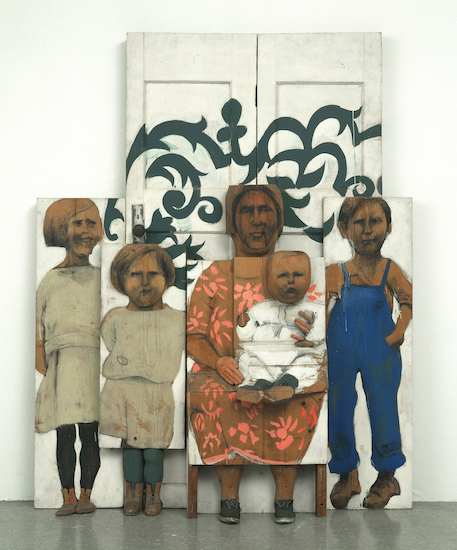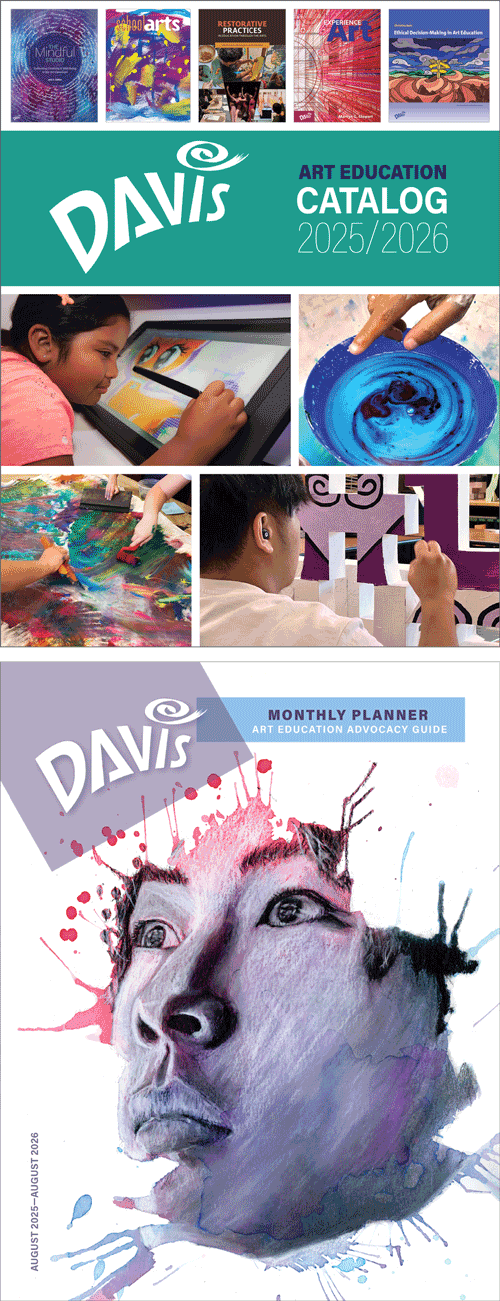Artist Birthday: Marisol
Marisol Escobar was one of the few women artists’ names associated with Pop Art. While she was renowned for her sculptures of celebrities and politicians, her anonymous figure sculptures contain a pathos and empathy lacking in most Pop Art.
Artist birthday for 22 May: Marisol Escobar (1930–2016, United States, born Venezuela)
Although Marisol's sculpture has been associated with Pop Art because of its use of found everyday objects, but it was much less ironic/satiric than other Pop Art.
 |
| Marisol, The Family, 1962. Paint and graphite on wood, sneakers, tinted plaster, door knob and plate, three sections, overall 209.8 x 166.3 x 39.3 cm. The Museum of Modern Art, New York. © 2025 Marisol Escobar / Licensed by VAGA at Artists Rights Society (ARS), New York. (MOMA-S1000esvg) |
The Family comes from a series in which Marisol intended to explode the myth of the "all American family." The eclectic nature of the figures recalls the characters in the early 1900s Latin America penny presses. The representation of everyday Americans reflects Marisol’s connection to the Latin American tradition of art that can be understood by the public. The Family was based on a Depression-era (1929–1940) photograph of a poor, southern family reminiscent of the Depression photos of Walker Evans (1903–1975) and Dorothea Lange (1895–1965).
Marisol's typical methodology was the work her figures out using blocks of wood on which she would delineate delicately—half-drawing half-painting—the features of the individual characters to startling effect. She sometimes incorporated sound or music, prefiguring such installations by at least ten years. Although incorporating everyday objects such as the doors into her work, there is a pathos and empathy in her use of these stoic Depression figures that make her work transcend a mere "Pop" stylistic designation.
During the 1960s the Pop Art movement arose in reaction against the domination of Abstract Expressionism in American art. The movement was concerned with the world of objects and everyday events in popular American culture that were elevated to the status of subject matter. It also signaled a return to the importance of the figure and of realism in both painting and sculpture. Because of the variety of styles used to parody everyday life, Pop Art is not a style as much as an aesthetic. The sculptures of Marisol are often associated with Pop Art.
Marisol was raised in Caracas until she was eleven, when she was sent to a boarding school in New York. After studying art in Los Angeles and Paris, she moved to New York permanently in the early 1950s. At the time, Abstract Expressionism was the dominant style. Marisol studied for a time under Abstract Expressionist mentor Hans Hofmann (1880–1966). While painting, she taught herself how to sculpt. She exhibited small terra-cotta pieces modeled on Ancient American and Mexican folk art in a gallery in New York.
In 1955, after exposure to the rough wooden folk sculpture of Maine, Marisol dropped painting as her primary medium to concentrate on sculpture. Her work in the late 1950s and early 1960s was composed primarily of rough-hewn wooden core. Starting in the early 1960s, like Pop artist Jasper Johns (born 1930), she began incorporating everyday objects with her subjects. Her work was perceived as Pop art, because, like that movement, many of her pieces seemed to be parodies of American middle-class culture. However, her works involved sophisticated carving and painting, and critics soon recognized that her pieces were less satirical and superficial than other Pop artists.
Marisol had her first one-person show at the Leo Castelli Gallery in New York in 1958. The Castelli Gallery was the major representative of many of the Pop artists as well. That show was followed by at least ten solo exhibits between the years 1962 and 1978. She also shows regularly at the Estudio Actual in Caracas. In 1963 her work was included in the exhibit American 1963 at the Museum of Modern Art in New York.
Correlations to Davis programs: Explorations in Art 2E, 5th Grade, Unit 3.3 -- Studio Exploration, Found-Object Sculpture, Unexpected Figures; Discovering Art History 4E, Chapter 17 Art from the Fifties to the Present 17.2 -- Pop Art and Op Art; Davis Collections, US Latinx Art

Comments